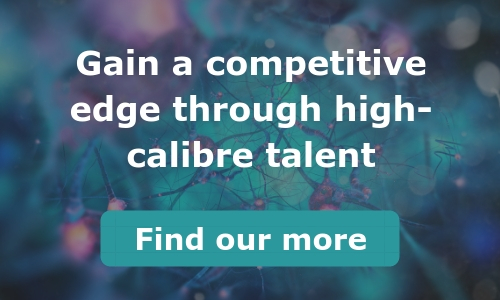A powerful employer brand can be your ace card in your search for top talent. With a robust employer brand, candidates will actively seek out opportunities within your organisation, and passive candidates won’t take much convincing otherwise. Your employer brand builds off of and complements your corporate brand; to what degree the latter influences the former will depend upon how your products and services are perceived by the market. (For example, a manufacturer of cosmetics targeting women might appeal more, but not exclusively, to female candidates). In the ideal scenario, you’ll be renowned for providing exceptional products, services and customer service, as well as being a great place to work.
Despite its intrinsic benefits, employer brand rarely gets the attention it deserves, even in large organisations with sizeable headcount and large budgets. Granted, for smaller organisations and startups struggling with traditional brand awareness, employer brand will likely play second fiddle to building and maintaining the corporate brand, but it doesn’t have to. The earlier you start thinking about employer brand, the easier it becomes to entwine with your corporate brand. Check out these 3 steps to a powerful employer brand for life science organisations of all shapes and sizes.
1) Assess where you’ve come
You’ve always had an employer brand. You just haven’t had an employer brand strategy.
First things first, map out the candidate journey – the stages job seekers go through when researching, applying and accepting a job. Don’t be fooled into thinking the candidate journey starts from the moment a candidate submits an application. This assumption means you’ve missed three vital stages – awareness, consideration and interest. The candidate journey varies with type of candidates (active Vs passive job seekers) and will likely involve both online and offline elements. For more on the intricacies of the candidate journey and why it matters, check out this excellent blog by Talentlyft.
When scrutinising your candidate journey, identify areas that could be optimised to help reduce time-to-hire and increase quality-of-hire, as well as stages or processes which you believe to be neglected or resource-starved. While you’re at it, review you physical candidate touchpoints – career site, company LinkedIn page, job descriptions, jobs ads, social media pages etc. Pay particular attention to messaging, tone-of-voice, sentiment and consistency.
With the candidate journey mapped out and touchpoints audited, it’s time to turn your attention to your employees. (The very people upon which the employer brand strategy hinges). Survey your employees to find out why they joined, what they like, and where there is room for improvement. For more on employee engagement surveys, check out these excellent articles by YouBecome.
On the subject of employee surveys, don’t forget to review your employee exit interviews for insight into why your employees left. Rarely will employees provide such frank and actionable feedback into your operations and company culture. For more information on employee exit interviews, including how to prepare and conduct them, read this article by the Balance Careers.
What isn’t divulged in employee exit interviews could well end up on employer review sites like GlassDoor. Prospective candidates will check them, so it’s in your best interests to monitor activity on these sites. Better still, incorporate employer reviews into your employer brand strategy. What could you do to facilitate your staff leaving positive reviews on these sites?
Next, sanity check you hiring metrics. How is your organisation performing on each of these crucial metrics:
- Job offer acceptance rate
- Time-to-hire
- Quality of hire
- Hiring manager satisfaction
- No. employee referrals
- Employee engagement rate
- New hire retention rate
- Win/lose ratio
- Awards won
Hiring metrics make talent attraction and retention easier by enabling Human Resources (HR) to evaluate the company’s recruitment strategy and resources. By keeping track of these all-important metrics, you can measure the impact of your employer brand strategy. For more on employer brand metrics, read our blog: How To Measure The Effectiveness Of Your Employer Brand
2) Visualise and plan
Now that you’ve assessed where you’ve come, it is time to plan for the future. A future where talent acquisition, employee engagement and retention are empowered by a robust employer brand.
The secret to success? Don’t fake it. If your employees aren’t on side, any efforts to artificially propagate employer brand will be negated by bad reviews on sites like Glassdoor, or worse, negative press. To ensure your employees live and breath your employer brand, you have to ensure that everyone is on the same wavelength and working to the same core values you seek to promote. Buy-in across your organisation is essential to ensure that your employer brand vision gets the resources it needs, the budget it requires and most importantly, the recognition that it deserves.
RELATED: Increase quality-of-hire by partnering with a reputable boutique talent consultancy
Start at the top. You won’t get far without senior management buy-in. Ultimately, you should aim to prepare a detailed business case for your employer brand (we discuss what to include later in this chapter), but first, put the feelers out their by assembling would-be stakeholders in HR, marketing and other senior members of staff to discuss the following:
- What do you offer your employees that your competitors can’t?
- What is unique about your organisation?
- What are your organisation’s inherent strengths?
- What values do your employees live/breathe?
- What do you offer prospective employees and what do they get in return?
The purpose of this exercise is to help you hone in on your Employer Value Proposition (EVP) – the benefits, opportunities and rewards you offer your employees in return for their hard graft and commitment – while reinforcing the reasons why your organisation is an exceptional place to work. It will also help you align your employer brand strategy with your mission, values and goals.
Having done your homework, it’s time to create a detailed business case which includes:
- Goals and objectives of employer brand: What do you want to achieve and why? Even the most streamlined of candidate journeys will contain a myriad of different touchpoints. It’s unlikely that you have the time and resources to tackle them all, at least not at once. Craft tightly defined and measurable goals and objectives which adhere to SMART principles.
- How employer brand benefits recruitment: While you might understand the intrinsic benefits that a robust employer brand can bring, don’t assume senior management do. Highlight reputable studies and success stories. Share potential quick wins unearthed from your candidate mapping and touchpoint audit. Where possible, quantify anticipated results.
- How success will be measured and celebrated: As with any investment, it’s good to ensure you are making a return on investment (ROI). This means you need to be measuring the right metrics from the outset. When you achieve your objectives, ensure you share your success by translating hiring achievements to tangible business outcomes.
- Resource requirements and anticipated cost: Whether tweaking the candidate journey or overhauling it entirely, there are costs to consider, both internal and external. How much will it cost? What extra resources, if any, will be required? How long will it take to implement? When can you expect to see a return on investment (ROI)? If in doubt, always overestimate.
- Go-to-market strategy, including next steps: What activities must be executed, in what order, and by when? What are the project milestones and who is responsible for overseeing them? Where and how will you promote your story? To whom? What quick fixes need to be implemented to enable this? All these questions need to be answered and the project plan agreed.
3) Execute and measure
Once senior members of staff have approved the business case, it’s time to spread the word to your coworkers, specifically what you are doing and why you are doing it. Remember, your employees are your greatest brand ambassadors. If they don’t buy-in, you risk your employer brand being out-of-touch with how your employees perceive you as an employer, with disastrous consequences. The strength of your employer brand is ultimately determined by the belief of your employees in their employer. Live your EVP and demonstrate that you take your employment duties seriously.
Launch your employee brand internally first. Run workshops across your organisation to communicate your vision and what changes will be made to allow that vision to prosper. To further promote your employer brand, consider creating a steering committee of employer brand champions that are dedicated to continually improving the employer brand. By continually refining your EVP and involving your employees in the process, you are building a better workplace. Employees want to work for companies with a vibrant culture they can be part of.
But don’t stop there. Look to involve your employees in your employer brand collateral. Showcase their achievements, create day-in-the-life videos and publish testimonials across your candidate touchpoints – career page(s) and social media to name a few. You could even leverage your employee’s social reach by asking them to circulate relevant posts on their social media accounts.
Talking of candidate touchpoints, tweak these as part of a larger body of work to implement quick fixes to the candidate journey identified during your audit. As a bare minimum, ensure all candidate touchpoints have a consistent message, tone-of-voice and sentiment and that any bottlenecks in the candidate journey are elevated. (For more substantial changes, consider running a pilot on a specific recruitment drive or period). At the same time, update or create new candidate personas which reflect your EVP and the calibre of candidate you seek to attract.
View these activities as your employer brand soft launch. You are not making substantial revisions; you are honing existing channels and processes. For some, this might be the extent of your revisions. For others, it’s just the start. Regardless of your ambitions (and resources), refrain from doing more until you’ve given these enhancements time to bed. If you attempt to do too much, it can be difficult to determine which changes brought about positive outcomes. At worst, it could disrupt internal operations, worsen the candidate experience and undermine employer brand.
On the subject of measuring outcomes, keep an eye on the hiring metrics identified earlier. For online candidate touchpoints, consider supplementing these with metrics traditionally reserved for marketing activities: job advert view to apply rate, reach and engagement on social media, views, new Vs returning users, bounce rate and time-on-page for your careers page. If in doubt, consult with your marketing team. (Ideally, marketing will be a key stakeholder in your employer brand strategy. If not, consider this cooperation an olive branch to affirm that relationship).
Now you know what’s working, rectified what isn’t and rallied your employees behind your cause, it’s time to consider more advanced strategies to promote your employer brand. As touched upon earlier, this could be as simple as crafting employer brand-focused content – day-in-the-life videos, employee-focused blogs and testimonials – and encouraging your employees to share them with their wider network. Or it could extend to paid advertising campaigns, employer brand-focused events and much more. The sky’s the limit, but whatever you do, keep it authentic.
For more hiring advice tailored to hiring managers in the life science industry…
- Read How To Measure The Effectiveness Of Your Employer Brand.
- View our talent solutions to see how we can help you gain a competitive edge through talent.
* Fraser Dove International is a talent consultancy operating exclusively across the life sciences industry. While our roots lie in executive search, we provide more than the traditional recruitment services. Uniquely placed within the market, we have been providing cutting-edge talent solutions and insight to organisations at all stages of their journey – from start-up to established leaders – since 2013.

 Estimated read time: 7 mins
Estimated read time: 7 mins Date posted:07/10/2019
Date posted:07/10/2019





